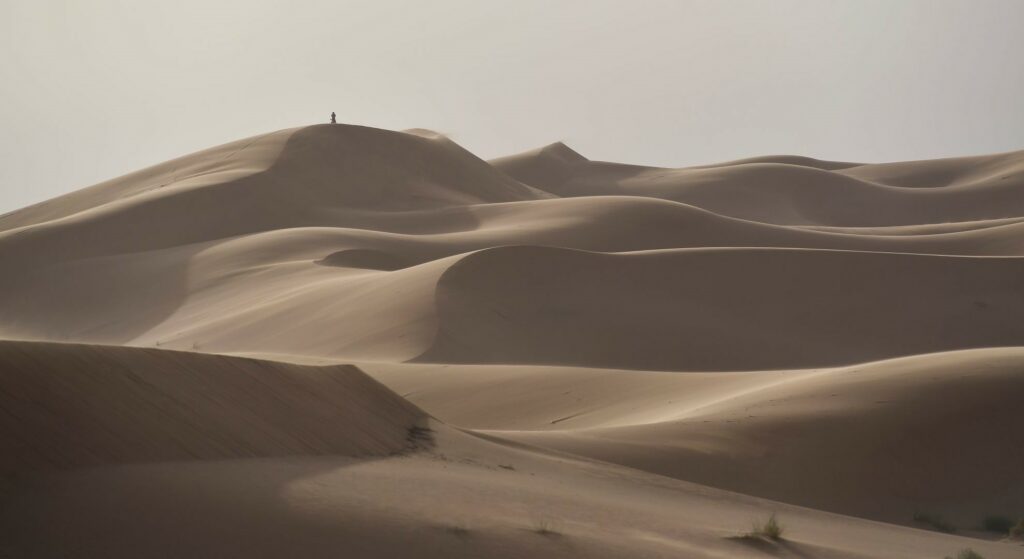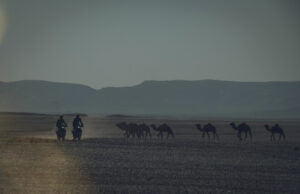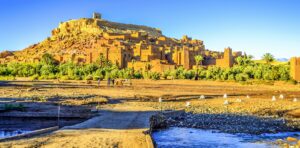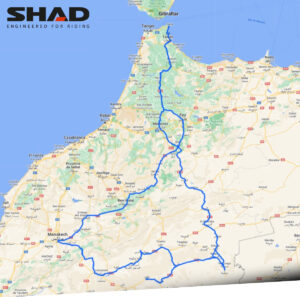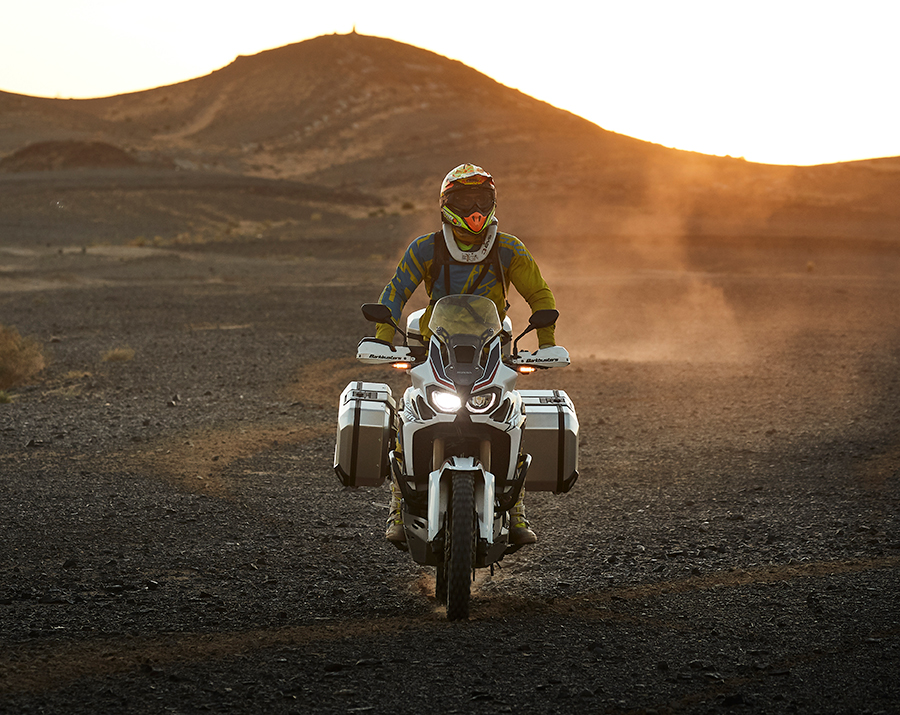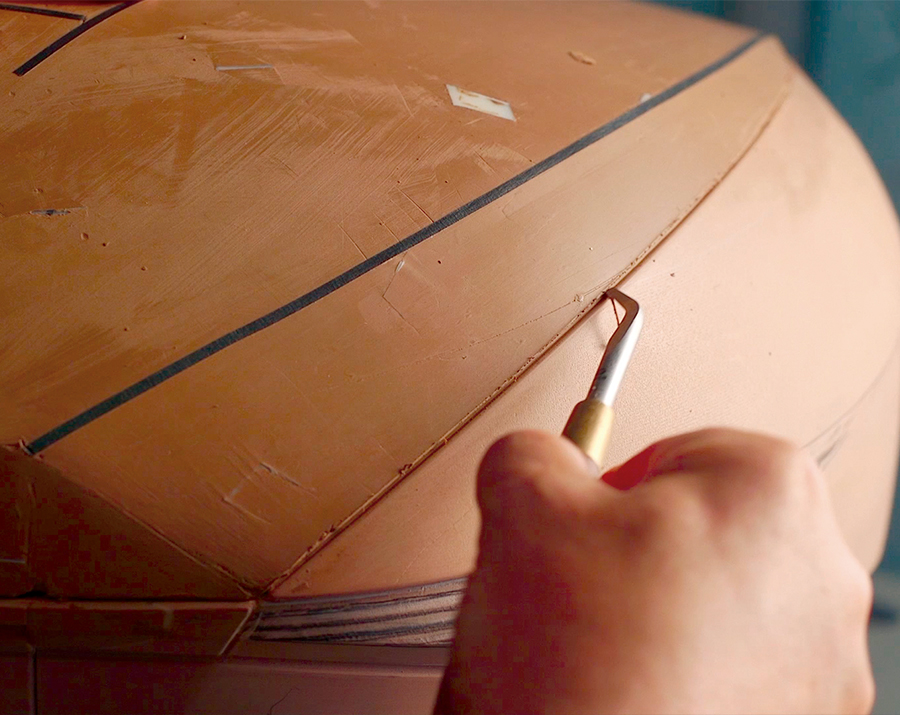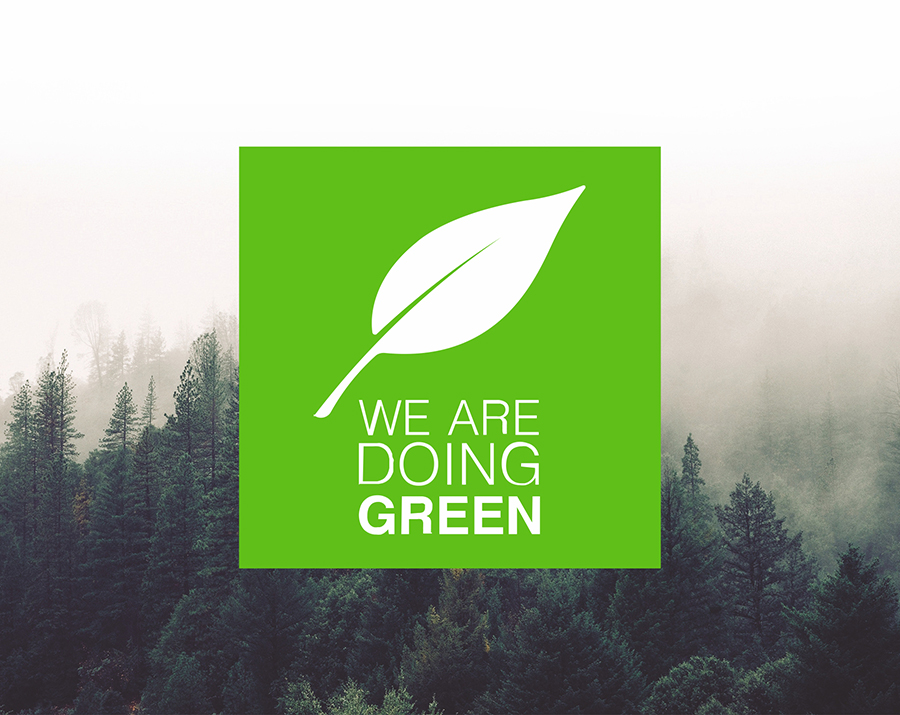Morocco is all about adventure and contrasts; it’s a fascinating country to explore on a motorcycle. That is why SHAD wants to offer you some advice so that if you haven’t dared travel there yet, you can do so with complete peace of mind.
The first recommendation: it requires some planning. It is a very large and varied country, and we need to study what we want to visit. We must always ride calmly and pay attention, enjoying the landscape, but without letting our guard down.
SHAD offers all types of solutions for your gear, but don’t add too much weight to a bike that is going to travel in areas that are a bit more complicated than usual. In addition to rigid or aluminum cases, soft-side cases like the Terra TR40 or the new TR30 Waterproof cases are the most practical and versatile options, especially if you are considering leaving the asphalt. Don’t forget to choose tank or leg bags, to have your essentials close at hand.
Many possible routes
Each area of Morocco is surprisingly different from the last one you visited, so you won’t be able to see everything you’d like in one single trip.
SHAD would recommend a counterclockwise loop that covers a wide spectrum of territories throughout nearly the entire country. It all starts with a short ferry crossing that leaves from Algeciras and disembarks in Ceuta, where the border has a special lane to streamline procedures for motorcycles. We’ll travel on to Fnideq and continue along the coast, stopping to eat some cheap and exceptionally high-quality fish and seafood in the tourist region between Cabo Negro and Martil.
From there, we turn towards the arid interior, for a mandatory visit and sleepover in Chefchaouen, which is also known as Chaouen. This small city with its narrow streets and staircases, where most of the walls have been whitewashed with a blue tinge, are sure to enthrall you.
The mountainous region
Next stop: the Ifrane region, known as “the Moroccan Switzerland”, because we will transition from a dry, rocky terrain to tall mountains, with immense cedar forests that give way to fir trees and houses typical of an Alpine landscape. We are in the eastern part of the Moroccan Atlas Mountains, a range the divides the country in two and that marks the nature of the territory on each side.
If we continue south, we will find the province of Midelt. It is a sight to see how the tall mountains transform into immense plains, full of unasphalted trails along the way to Errachidia. Here is where the terrain starts to give us an occasional glimpse of dromedaries and we make first contact with the hospitable Berber people. And if we continue south, we will finally start to see more and more sand, dotted with rocky paths until we start to see dunes in the distance. We are approaching Erg Chebbi, the famous sea of sand dunes around which we find the towns of Rissani, Erfoud and Merzouga.
Enjoying the dunes
If you like sand and you have off-road experience, you can enjoy them on your bike, as long as you’re prepared for it. But if what you want is to copy the Paris-Dakaar riders within your limitations and with as little risk as possible, the best thing to do is to stay at any of the good hotels and riads that can be found around Erg Chebbi and sign up for one of the excursions on an enduro bike, quad or buggy that they offer.
One thing you should not miss is spending a night in the dunes: there are many different jaimas camps where you can experience a night of adventure with an exceptional level of comfort.
There is a lot to see in the area, such as the ancient Rissani market, the marine fossil sites, the amazing Jorf and Gara Medouar pools, a place known as “The Portuguese Jail”, which you have seen used as a natural setting in movies such as The Mummy and Spectre.
Crossing the Djebel Saghro
After our days in the dunes, we head west, taking the solitary route to N’Kob, to then cross through what is known as Djebel Saghro. This is a harsh, infrequently traveled and not very well-known territory that is well worth a visit, thanks to the winding roads and mountainous trails of this unusual landscape. We arrive in Tinghir (or Tinherir), a city at the foot of the Atlas Mountains, where the route begins to some spectacular passes that are a must-see: the Todrà Gorges.
We continue west and run into Boumalne Dadès, a city at the foot of the Tafilalet Oasis, with its immense palm trees. From here, we set off to another attraction at the foot of the Atlas Mountains, the winding highway that climbs up to the Dadès Gorges, the “Moroccan Stelvio”. There are some impressive views from the top and a café/restaurant that is worth a visit to enjoy its terraces. We head down again to Boumalne Dadès and continue on to Ouarzazate, to the “Monkey Fingers”, rock formations that are called that way because they look like the fingers of a monkey.
Movie settings
We reach Ouarzazate, a bustling city, where we find film sets that are worthy of a visit. We continue along the highway that crosses through Ksar de Ait Ben Haddou, designated as a World Heritage site by UNESCO. This town is constructed in adobe on the bed of the Ounila river, the origins of which date back to the year 757. Its narrow streets and houses have been the natural setting for movies like Gladiator, among many others.
The mythical port of Tichka
We continue on our way north. Leaving Telouet behind, we continue on the route where the landscape gradually changes as we get closer to the mountains. We arrive at the port of Tichka (or Tizin’n Tichka), on the road which reaches an altitude of 2,260 m. It is the main mountain pass for land transport between Marrakesh and Casablanca and the province to the south of the gigantic Atlas Mountains. In the winter months, it is common to find snow on this route.
Marrakesh and its emblematic plaza
After a few kilometers of the “conventional” route, we arrive in Marrakesh, a city that has everything that you would imagine; we can highlight its enormous bazaar, the Kutubiyya mosque and the spectacular Jemaa el-Fna plaza, where you can find everything from stands with street food, snake charmers, traveling craftsmen and musicians to the most luxurious hotels and restaurants.
The labyrinth of Fez
From Marrakesh, we can choose either to head toward the tourist paradises on the Atlantic coast, such as Essaouira, or head toward Casablanca, in the north. We opt to continue crossing the country diagonally, setting our courses for Fez. This medina is an ancient city with more than 9,000 streets inside, many of them only wide enough for a cart to pass. Each area inside is dedicated to a certain type of trade or craft. Especially beautiful are the pools of colors where they tan and dye hides, and the spice shops.
However, it is nearly impossible to visit this labyrinth without a local guide who is an expert on its streets: all the intersections can appear identical to us. It is easy to hire a guide in hotels and tourism offices.
Escaping the ordinary
From Fez, if we want to enjoy the less touristic side of Morocco, instead of taking the main route, the N13 to Tetuan, we will take the R501 to R408. We will arrive with the sensation that we are one of the first ever to travel its winding, solitary roads on a bike.
From here we travel on to Fnideq and once again cross the border with Ceuta, without cutting the boarding time to close and allowing for minor mishaps. You may be asked to show your baggage at the border, so your SHAD cases and bags must be ready for inspection. Don’t forget to hand your vehicle entry card back in and show your passport, and then you’re ready to embark on your way back to the peninsula.
Once you disembark back in Algeciras, you’ll already be thinking about when you can return…
SHAD RECOMMENDATIONS FOR THE TRIP
Essential notes:
- Don’t be too ambitious with your daily kilometers. There’s a lot to see, and the worst thing you can do is trying to go too fast. On your way in and out of towns, there are often speed traps, and when you least expect it, children and stray animals can wander in out of nowhere.
- In the case of mechanical trouble, do not hesitate to turn to the locals for help. In most towns, you will find shops where they know how to repair practically everything, and someone will often offer to tow you to wherever you need to go.
- Gasoline: there are service stations everywhere, but never wait to get down to your reserve tank. At gas stations, you are almost always expected to pay in cash, and they accept both dirhams and euros. Do not buy gasoline from the drums that is offered on the side of the road; it often causes problems for delicate bikes.
Necessary documentation
- If the bike is in your name, you just need the original documentation on paper (registration certificate and technical data sheet), a current vehicle inspection certificate and your international insurance certificate, which certifies that your insurance is valid outside the EU and in other countries covered by the agreement. Make sure that the fine print specifies that Morocco is included on your policy, otherwise you can’t enter with your bike.
- Your passport must be valid for more than six months from your date of entry.
- Customs officials will give us an entry document for the bike that must be returned upon leaving the country (Don’t lose it!).
Text and pictures: Luis Morales
